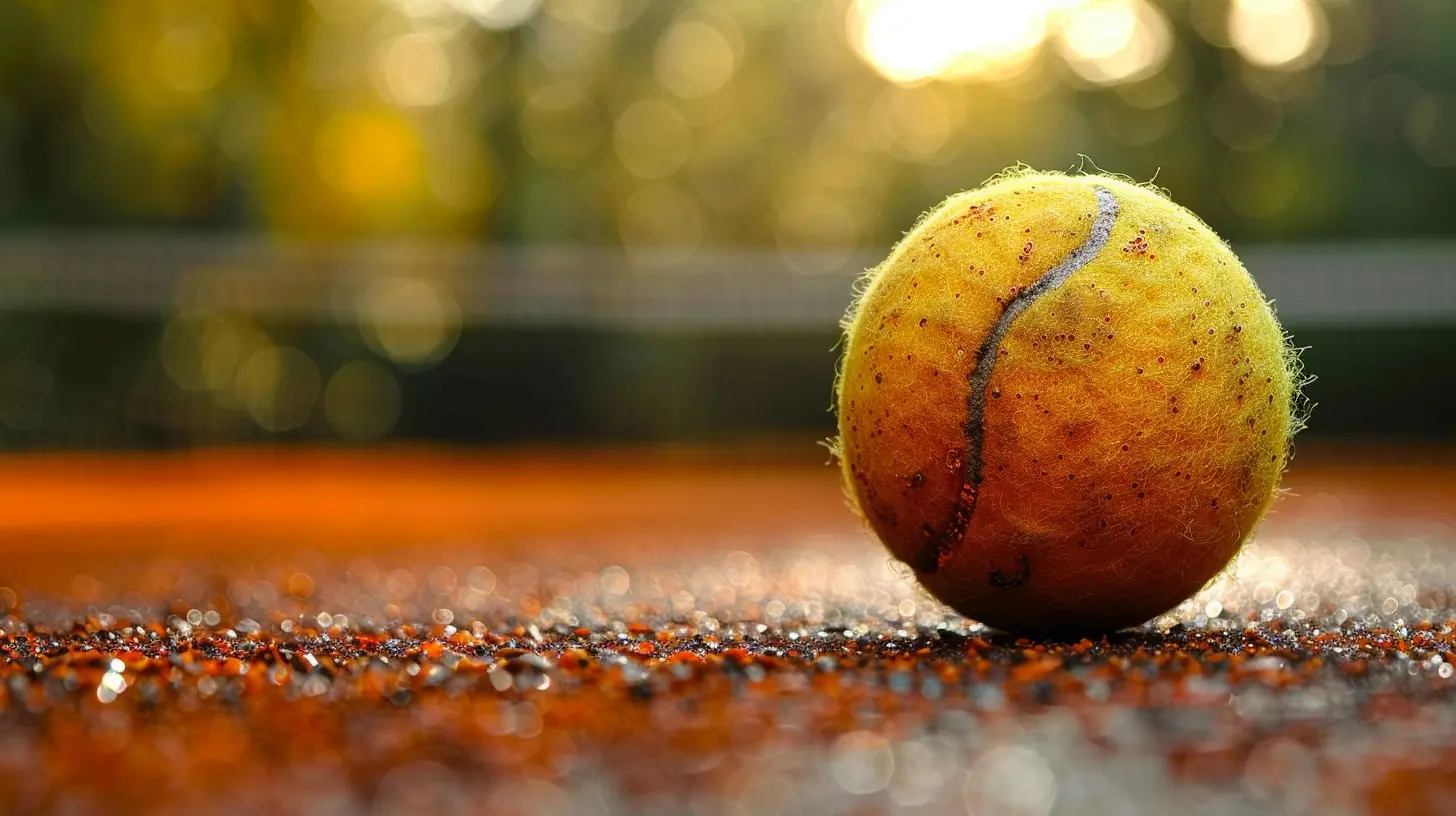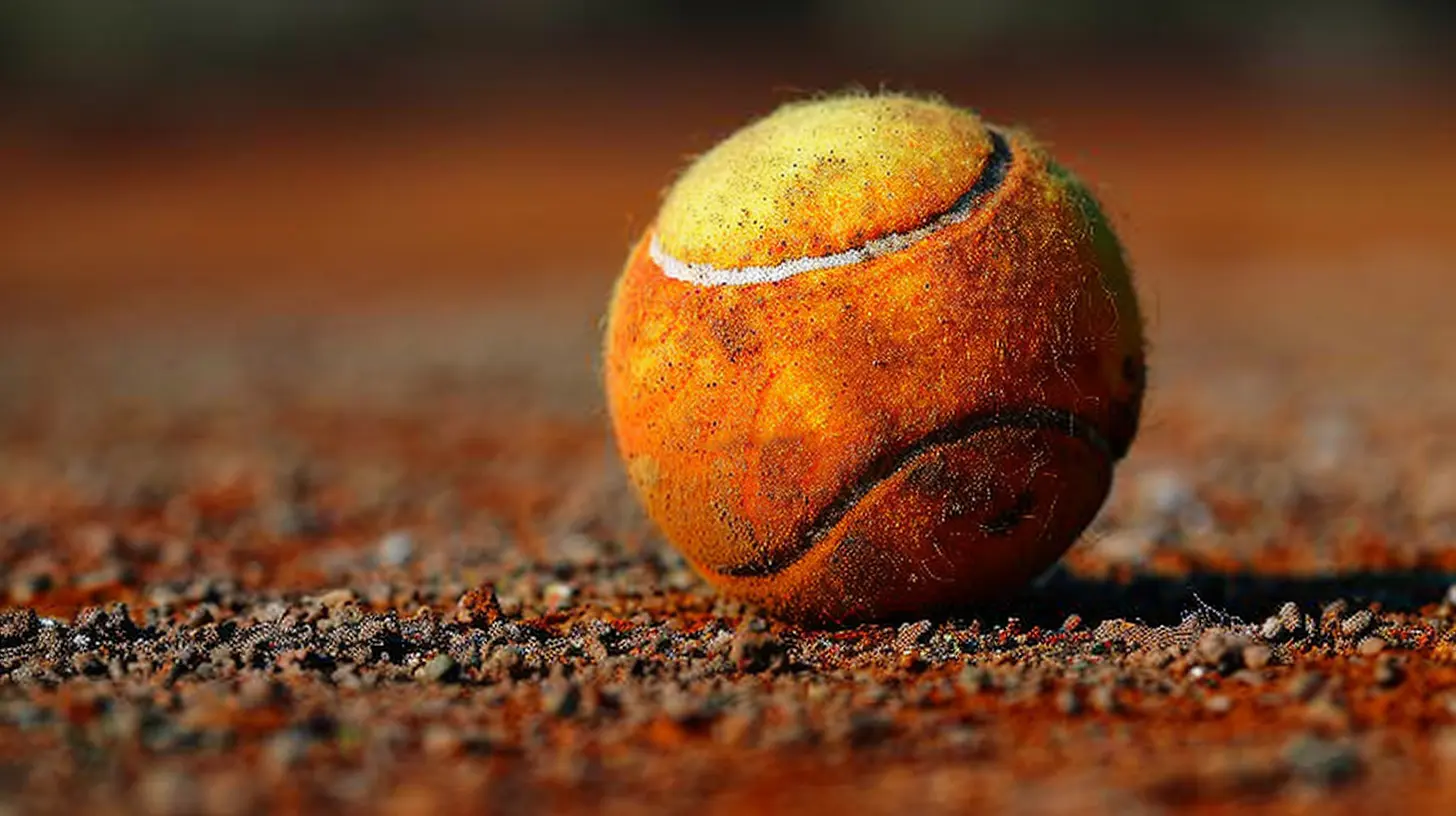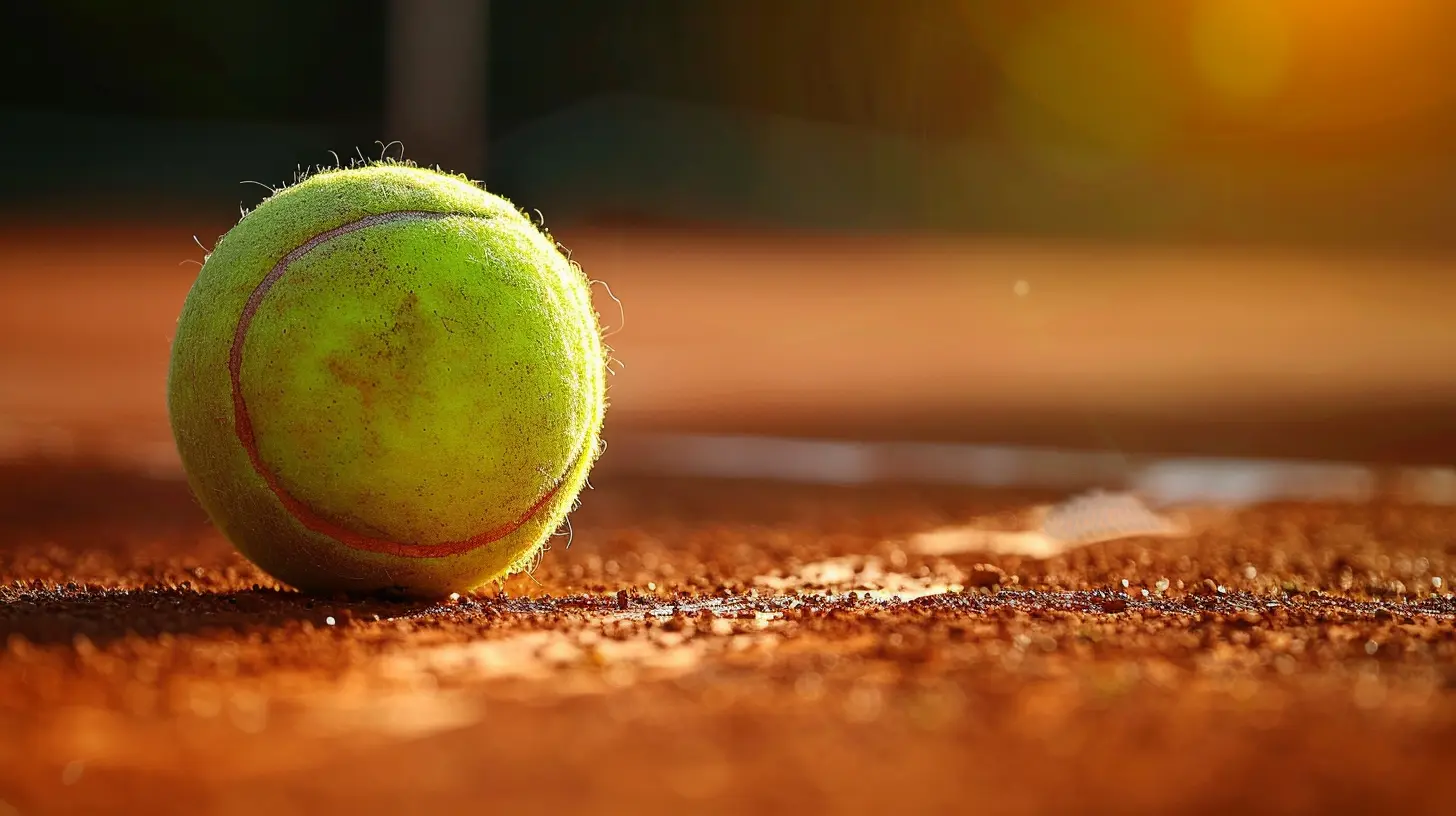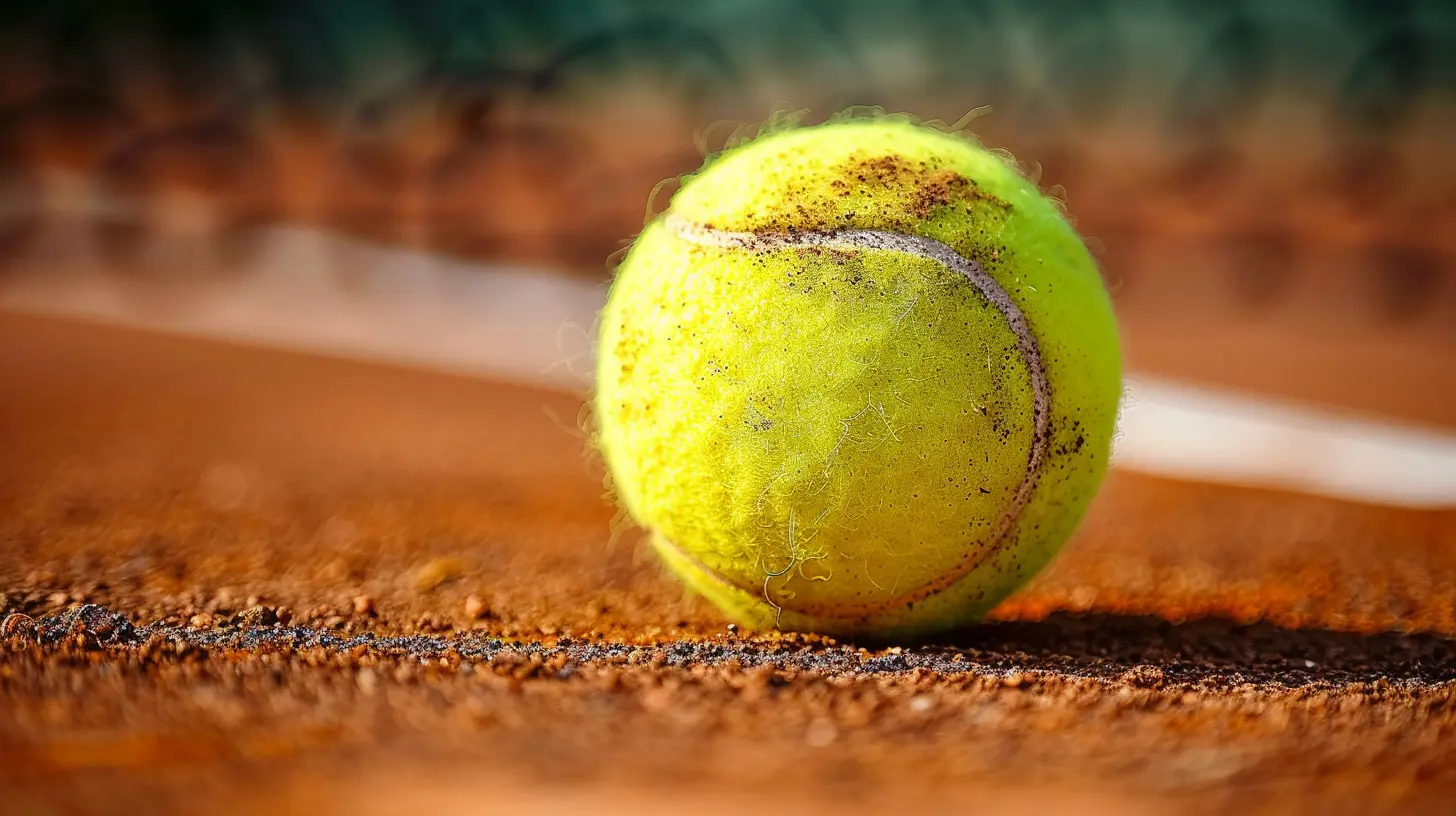How to Handle the Physical Demands of Clay Court Tennis
6 January 2025
If you've ever played tennis on a clay court, you know it's a whole different ball game. Literally. Clay courts are slower, the ball bounces differently, and the surface can be physically taxing on your body. Whether you're an amateur player or someone looking to step up your game, understanding how to handle the physical demands of clay court tennis can make a world of difference.
In this article, we’re going to dive into what makes clay court tennis so challenging and how you can better prepare your body for it. From endurance to footwork and recovery, here’s everything you need to know.

Why Clay Court Tennis Is More Physically Demanding
First things first—why is clay court tennis so much harder on your body than other surfaces like grass or hard courts? Let’s break it down.Slower Surface, Longer Rallies
Clay courts are known for being slower. The surface absorbs more of the ball’s impact, causing it to bounce higher and slower. As a result, rallies tend to last much longer. This means you’ll be on the court for extended periods, covering more ground. If you’re not in top physical condition, you’ll find yourself gasping for air after a few long rallies.Footwork Is Key
On a hard court, you can rely more on your strength. But on clay, footwork becomes vital. The surface is slippery, and sliding is not just a technique—it's a survival skill. You have to be light on your feet, constantly adjusting your position, and sliding into shots. Poor footwork on clay can throw off your balance and leave you vulnerable, not to mention increase the risk of injury.The Surface Is Harder on Your Legs
While clay courts are softer than hard courts, they still demand a lot from your legs. The constant sliding, stopping, and starting can take a toll on your muscles, particularly your quads and calves. Plus, the surface can be uneven in spots, putting extra strain on your joints and ligaments. If you’re not careful, you could end up with some serious muscle fatigue or worse, an injury.
Building Endurance for Clay Court Tennis
Now that you know why clay court tennis is so physically demanding, let’s talk about how to prepare for it. First up—endurance. You can’t just rely on short bursts of energy like you might on a hard court. On clay, you need to be able to sustain your energy levels for long rallies and extended matches.Cardio Is Your Best Friend
If you want to last on a clay court, you need to work on your cardiovascular endurance. Running, swimming, cycling, or even high-intensity interval training (HIIT) can help build the stamina you need. Start incorporating cardio into your regular routine at least 3-4 times a week. You don’t have to run a marathon, but aim for at least 30-45 minutes of moderate to intense cardio.Interval Training for Tennis-Specific Endurance
While long-distance running is great for overall endurance, it doesn’t exactly mimic the stop-and-go nature of tennis. For that, you’ll want to incorporate interval training. Try alternating between periods of intense activity (like sprinting) and rest (like walking or slow jogging). This kind of training will help your body adapt to the quick, explosive movements required on a clay court.Practice Longer Rallies
Another great way to build endurance is simply by practicing longer rallies. Get a hitting partner and focus on keeping the ball in play for as long as possible. Not only will this improve your stamina, but it will also help you get used to the slower pace and higher bounces that are characteristic of clay courts.
Strength and Conditioning for Clay Court Success
Endurance is important, but it’s not the only thing you need to succeed on clay. You also need strength—particularly in your legs, core, and upper body. Clay court tennis is all about controlled power, and that starts with a strong, balanced body.Leg Strength Is Crucial
When you’re sliding, stopping, and sprinting on clay, your legs are doing most of the work. That’s why leg strength should be a top priority. Squats, lunges, and calf raises are all excellent exercises for building the leg muscles you’ll rely on in a match. Don’t forget about plyometrics (like jump squats) to improve your explosiveness, which will help you get to those tricky drop shots.Core Strength for Stability
A strong core is essential for maintaining balance, especially when you’re sliding into a shot on a slippery clay surface. Incorporate exercises like planks, Russian twists, and leg raises into your routine to build core strength. A stable core will not only help with your balance but also improve your groundstrokes and serve.Don’t Neglect the Upper Body
While clay court tennis is often leg-heavy, your upper body plays a huge role too. You’ll need strong shoulders and arms for those long rallies and high-bouncing shots. Push-ups, pull-ups, and resistance band exercises can help build the upper body strength and endurance you’ll need.
Mastering Footwork on Clay Courts
Footwork on a clay court is an entirely different beast compared to other surfaces. The slippery nature of the clay means you have to move with precision and control. Here’s how to master your footwork for clay court tennis.Learn How to Slide
Sliding on clay isn’t just for show—it’s a necessary skill. If you don’t know how to slide properly, you’ll find yourself struggling to reach the ball or even risking injury. The key to sliding is to start the slide just before you hit the ball, not after. This allows you to maintain control and balance as you execute your shot.Practice sliding during drills or even during friendly matches. The more comfortable you are with sliding, the easier it will be to move efficiently on the court.
Stay Low for Better Balance
On clay, staying low is crucial. This helps you maintain better balance and control, especially when you’re sliding into a shot. Bend at your knees and keep your center of gravity low throughout rallies. This isn’t just good for balance—it also puts you in a more powerful position to hit the ball.Move Like a Boxer
Think of yourself as a boxer in the ring—always on your toes, ready to move in any direction. Tennis on clay requires the same kind of nimbleness. You need to be light on your feet, ready to adjust quickly to the ball’s unpredictable bounce. Try to avoid planting your feet too early, as this can throw off your balance. Stay on the balls of your feet, and be prepared to adjust your position constantly.Recovery Is Key
Clay court tennis can be brutal on your body, so proper recovery is essential. Without it, you increase your risk of injury and burnout.Stretching and Mobility Work
After a grueling session on the clay, your muscles will need some attention. Stretching is crucial for preventing tightness and soreness. Focus on dynamic stretches before your match and static stretches afterward. You’ll also want to incorporate mobility exercises, especially for your hips and ankles, which take a beating on the clay.Hydration and Nutrition
Don’t forget about hydration and nutrition. Clay court matches can be long, and you’ll be sweating buckets. Make sure you’re drinking plenty of water before, during, and after your match. A sports drink with electrolytes can help replace lost salts and minerals. As for nutrition, focus on a balanced diet rich in carbohydrates, protein, and healthy fats to fuel your body.Rest and Recovery Days
Lastly, give your body time to recover. You might be tempted to hit the court every day, but rest is just as important as training. Take at least one or two days off from intense physical activity each week to let your muscles recover. You can use this time for light stretching, yoga, or even a massage to keep your body in top condition.Mental Toughness: The Unseen Physical Demand
While we’ve been talking a lot about the physical side of clay court tennis, there’s one more aspect that’s just as important—mental toughness. Long rallies and extended matches can be mentally draining. Staying focused and resilient is crucial if you want to succeed on clay.Stay Patient
Clay court tennis requires patience. You can’t always go for the winner right away like you might on a faster surface. Instead, you’ll need to build the point and wait for the right opportunity. This can be mentally exhausting, but staying patient is key.Stay Positive
Finally, stay positive. Clay court tennis can be frustrating, especially if you’re not used to the surface. Don’t let a few lost points or frustrating bounces get in your head.Final Thoughts
Clay court tennis is a unique challenge, but it’s also one of the most rewarding surfaces to play on. Once you’ve mastered the physical demands—endurance, strength, footwork, and recovery—you’ll find yourself not only surviving but thriving on the clay. So lace up your shoes, hit the court, and start working on these skills today. Before you know it, you’ll be sliding, rallying, and winning like a clay court pro!all images in this post were generated using AI tools
Category:
TennisAuthor:

Umberto Flores
Discussion
rate this article
21 comments
Julian McGillivray
Beyond technique and stamina lies an ancient secret of clay court mastery. Unravel the whispers of the court, and you might just discover the edge you need.
April 3, 2025 at 11:25 AM

Umberto Flores
Absolutely! Mastering the nuances of clay courts goes beyond just physical aspects; it requires understanding the surface's unique rhythm and adapting your strategy accordingly. Embrace the whispers of the court to gain that essential edge!
Adria McTavish
Handling the physical demands of clay court tennis is like trying to keep a cat in a bathtub—impossible and messy! Just remember to stretch, hydrate, and maybe invest in a good pair of shoes; nobody wants to turn into a human slip 'n' slide!
February 9, 2025 at 7:36 PM

Umberto Flores
Great analogy! Staying hydrated and investing in proper shoes are key to managing those challenges on clay courts. Thanks for the reminder!
Aelith McVicar
Mastering clay court tennis requires tailored conditioning, strategic footwork, and stamina to endure longer rallies and reduce injury risks effectively.
February 4, 2025 at 7:58 PM

Umberto Flores
Absolutely! Tailored conditioning, smart footwork, and stamina are crucial for thriving on clay. These elements not only enhance performance but also help prevent injuries during those longer matches.
Olivia McGovern
Great insights on managing the unique challenges of clay court tennis! The emphasis on proper conditioning and mental resilience is vital for success on this surface. Looking forward to applying these strategies in upcoming matches. Thanks for the informative read!
February 1, 2025 at 12:03 PM

Umberto Flores
Thank you for your feedback! I'm glad you found the insights helpful. Wishing you the best of luck in your upcoming matches!
Bear McFarlane
Embrace the clay’s embrace, stamina blooms, resilience is key.
January 28, 2025 at 5:53 AM

Umberto Flores
Thank you! Embracing the challenge of clay courts truly nurtures both stamina and resilience. Your support is appreciated!
Angela Long
Mastering clay court tennis requires resilience and adaptability. Focus on building endurance and agility through targeted training, while embracing the unique challenges of the surface. Commit to a strategic mindset, and you'll conquer the demanding nature of the game.
January 24, 2025 at 4:28 AM

Umberto Flores
Absolutely! Resilience and adaptability are key. Targeted training for endurance and agility will enhance performance on clay. A strategic mindset is essential to conquer its challenges.
Roxie Powell
Clay court tennis: where your feet slip more than your excuses! Remember, if you’re not sliding like a pro, you’re probably just practicing your graceful fall for future performances!" 🎾😂
January 19, 2025 at 8:14 PM

Umberto Flores
Haha, great point! Embracing those slips is all part of the learning curve on clay. Just remember, every fall is a step closer to mastering that slide! 🎾
Mistral Stone
Great article! I appreciate the practical tips on managing the unique challenges of clay court tennis. It’s a mentally and physically demanding surface, and your insights on conditioning and strategy are invaluable. I’ll definitely incorporate these ideas into my training. Thank you for sharing your expertise!
January 16, 2025 at 5:15 AM

Umberto Flores
Thank you for your kind words! I'm glad you found the tips helpful and wish you the best in your training on clay courts!
Quinn Lamb
Great article! Clay court tennis really is a test of endurance and strategy. I always find it a bit of a love-hate relationship—so rewarding yet so exhausting! Those slippy slides and long rallies can really take it out of you, but nothing beats that satisfying clay court victory!
January 13, 2025 at 3:54 AM

Umberto Flores
Thank you! I'm glad you enjoyed the article. Clay courts definitely challenge both endurance and strategy, making those victories even sweeter!
Hope Marks
Amidst the sun-kissed clay, where battles unfold, With each determined stride, let resilience be told. Embrace the challenge, feel the earth's gentle sway, For in grueling toil, champions find their way.
January 12, 2025 at 12:00 PM

Umberto Flores
Thank you for capturing the spirit of perseverance in clay court tennis! Your words beautifully reflect the resilience needed to excel on this challenging surface.
Isaac Strickland
Mastering clay court tennis requires not only physical conditioning but also mental resilience. Prioritize strength, endurance, and skills training, while embracing patience and adaptability—key ingredients for thriving in this demanding yet rewarding sport.
January 11, 2025 at 12:29 PM

Umberto Flores
Absolutely! Balancing physical conditioning with mental resilience is crucial for success on clay courts. Prioritizing strength, endurance, and adaptability will definitely enhance your performance.
Joy McDougal
In the dance of clay, where every slide sings, Strength and grace intertwine, like the rhythm of springs. Embrace the gentle burn, let your spirit soar, For on this earthy canvas, champions are born to explore.
January 10, 2025 at 12:51 PM

Umberto Flores
Thank you for capturing the essence of clay court tennis so beautifully! Your words perfectly reflect the resilience and artistry needed on this unique surface.
Lulu Powell
Great insights on managing the unique challenges of clay court tennis! Emphasizing endurance, recovery, and proper technique is crucial for success on this demanding surface.
January 10, 2025 at 5:40 AM

Umberto Flores
Thank you! I'm glad you found the insights helpful. Endurance and technique truly make a difference on clay!
Astraea Bass
Embrace the clay—it's like a spa day, just with more sweat!
January 9, 2025 at 9:43 PM

Umberto Flores
Absolutely! Embracing the clay not only enhances your game but also offers a unique, rewarding experience—sweat included!
Cambria Shaffer
Clay court tennis presents unique physical challenges, requiring players to adapt their training and strategies. Emphasizing endurance, agility, and strength is crucial, as the slower surface demands quicker lateral movements and prolonged rallies. Players should focus on injury prevention and recovery to maintain peak performance throughout the demanding clay season.
January 9, 2025 at 2:01 PM

Umberto Flores
Absolutely! Adapting to clay courts requires tailored training that prioritizes endurance, agility, and strength, along with a focus on injury prevention and recovery for optimal performance.
Ace McIntire
Great tips for managing clay court challenges effectively!
January 9, 2025 at 5:48 AM

Umberto Flores
Thank you! I'm glad you found the tips helpful. Happy playing!
Evelyn McConnell
Embrace the challenge of clay court tennis! Each set is an opportunity to build strength, resilience, and skill. With determination and focus, you’ll not only improve your game but also discover your true potential. Keep pushing and enjoy the journey!
January 8, 2025 at 7:39 PM

Umberto Flores
Thank you! Embracing the challenges of clay court tennis indeed fosters growth and resilience, making the journey truly rewarding.
Nathan Mercado
Clay court tennis requires a unique blend of stamina, agility, and strategic thinking. Players must adapt to the slower surface and extended rallies, which demand strong leg strength and endurance. Proper conditioning, hydration, and technique are essential for maximizing performance and minimizing injuries on this challenging terrain.
January 8, 2025 at 1:22 PM

Umberto Flores
Absolutely! Excelling on clay does require a unique combination of stamina, agility, and strategy, emphasizing the need for proper conditioning and hydration to perform well and avoid injuries.
Opal Kline
Clay court tennis demands unique physical endurance and agility. Players must focus on maintaining balance, optimizing footwork, and developing stamina to adapt to the slower surface. Incorporating specific strength training and proper hydration strategies is essential for sustaining performance throughout long matches.
January 8, 2025 at 4:26 AM

Umberto Flores
Absolutely! Clay court tennis requires a distinct blend of endurance, agility, and balance. Tailored strength training and hydration are vital for maintaining peak performance in longer matches.
Isabelle Rivera
Navigating the physical demands of clay court tennis requires a unique blend of endurance, agility, and mental resilience. Players must adapt their training to emphasize stamina and movement efficiency, while also prioritizing recovery to combat the wear and tear of longer rallies.
January 7, 2025 at 5:57 AM

Umberto Flores
Absolutely! Clay court tennis is all about endurance and efficient movement. Proper training and recovery strategies are essential to handle those extended rallies effectively.
Joel Barlow
Great article! Clay court tennis really requires a unique approach to physical endurance and strategy. I appreciate the tips on conditioning and recovery; they resonate with my own experiences. It's inspiring to see how we can all improve our game by understanding these demands better. Thank you!
January 6, 2025 at 8:39 PM

Umberto Flores
Thank you for your kind words! I'm glad you found the tips helpful and relatable. Wishing you continued success on the clay!
MORE POSTS

Stadium Innovations That Are Changing the Game

Handling the Unpredictable: Refereeing in Chaotic Situations

Hockey’s Most Memorable Overtime Moments

How Digital Twins Are Changing the Way Teams Prepare for Competition

When Legends Fall: Scandals That Shattered Athlete Legacies

How Stadiums Are Integrating Augmented Reality for Fans

Refereeing in Contact Sports: Safety vs Fair Play

The Science of Fan Engagement: Using Data for a Better Experience

The Evolution of Tennis Sponsorships and Endorsements

The Rivalry That Electrified the NBA: Warriors vs. Cavaliers

How to Choose the Right Helmet for Your Sport

The Future of Club Teams: Innovations and Trends to Watch

Fitness and Focus: How Referees Train Like Athletes